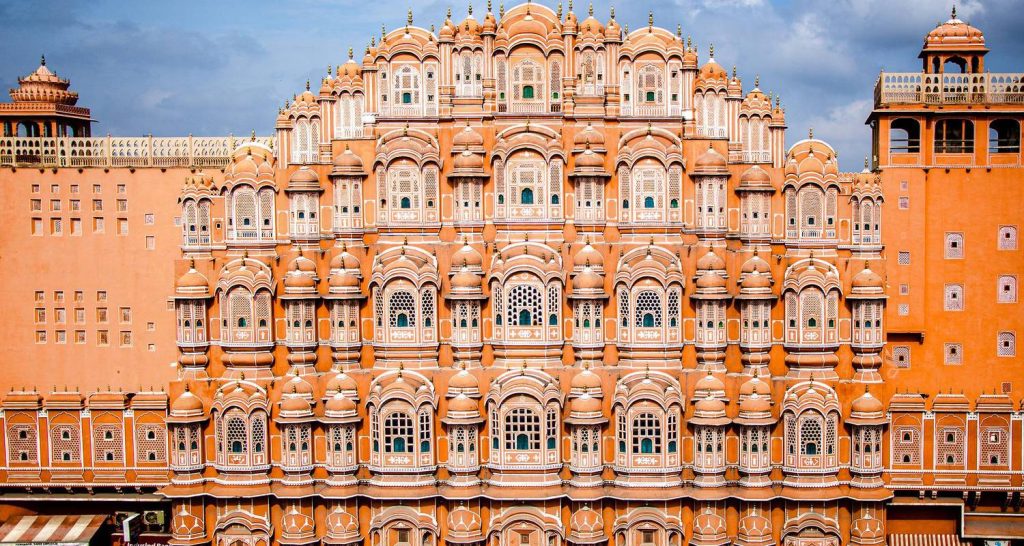Introduction: India’s Spiritual Tapestry
India, a land where spirituality is woven into the very fabric of everyday life, offers some of the most profound and sacred landscapes on the planet. The country’s sacred sites, spanning millennia, are not just places of worship but hold deep historical, cultural, and spiritual significance. In 2024, more than ever, travelers are seeking to explore the heart and soul of India, and its spiritual landscapes provide the perfect portal for that exploration.
From the tranquil banks of the Ganges to the vibrant temples of Tamil Nadu, India’s sacred sites are defined by their deeply rooted customs, rituals, and the unspoken energy that permeates the land. For those seeking a spiritual awakening, a deeper connection with tradition, or simply the chance to witness the timeless rituals of a vast and ancient civilization, India’s sacred spaces offer an unparalleled experience.
This article will guide you through some of the most significant sacred sites in India, explore the connection between these places and local customs, and provide travel tips on how to approach them mindfully. By the end, you’ll have a profound understanding of why spiritual journeys through India are among the most transformative experiences a traveler can embark on.
The Golden Temple: A Beacon of Peace and Devotion
One of the most revered spiritual sites in India is the Golden Temple (Sri Harmandir Sahib) in Amritsar, Punjab. For millions of Sikhs and people of other faiths worldwide, this temple is a symbol of peace, unity, and devotion. The Golden Temple, known for its stunning gold-covered structure and serene reflective pool, attracts pilgrims from all corners of the globe.
Spiritual Significance
The Golden Temple is not just a beautiful architectural wonder; it is a living embodiment of the Sikh philosophy. Its foundation was laid by Guru Ram Das, the fourth Sikh Guru, in 1581. It is the holiest shrine in Sikhism and stands as a beacon of spirituality and inclusiveness. The temple’s central goal is to foster a sense of community and equality among all visitors, regardless of their background, ethnicity, or religion. Here, the message of humility, service, and spiritual unity reverberates deeply.
Customs and Practices
Every morning, the Golden Temple’s Guru Granth Sahib (the Sikh holy scripture) is recited by a group of priests. The air resonates with the sounds of devotional hymns called Kirtan, offering a sacred experience that cleanses the soul. Visitors are encouraged to partake in seva (selfless service), whether by volunteering in the kitchen, where thousands of meals are prepared daily for free distribution, or by assisting with temple upkeep.
For travelers, the experience of walking barefoot on the marble floors and participating in the rituals, such as the parikrama (circumambulation) of the temple, offers an opportunity to connect with the spiritual essence of the place. The temple’s golden sheen is not just a visual marvel but a metaphor for the light of inner peace and humility.
Varanasi’s Ghats: The City of Eternal Life and Death
No spiritual exploration of India would be complete without visiting Varanasi, the ancient city on the banks of the Ganges River in Uttar Pradesh. Known as Kashi in Sanskrit, Varanasi is considered the spiritual heart of India. The city has been a center of learning, culture, and spirituality for over 3,000 years.
Spiritual Significance
Varanasi is one of the most sacred cities in Hinduism, believed to be the abode of Lord Shiva, the destroyer and transformer in the Hindu trinity. It is said that those who die in Varanasi attain moksha (liberation from the cycle of rebirth). This belief makes the ghats (steps leading to the river) of Varanasi some of the most revered places of pilgrimage for Hindus.
The most famous of these ghats is Dashashwamedh Ghat, where nightly aarti (devotional prayers) is performed, illuminating the evening sky with thousands of candles and incense sticks. The Ganges, revered as a goddess, is the focal point of all rituals. Bathing in the Ganges is believed to purify one’s soul and wash away sins.

Customs and Practices
The aarti ceremony at Dashashwamedh Ghat is a sensory overload, where the smell of incense mingles with the sight of flames and the sound of bells and chants. Tourists are welcome to observe but should maintain a respectful distance, as the ritual is not only spiritual but intensely personal for many of the locals. Witnessing the cremation ceremonies along the ghats may be confronting for some, but it’s a potent reminder of the cycle of life and death.
Travelers often walk along the ghats at sunrise, soaking in the vibrancy of the city while witnessing countless pilgrims offering prayers, lighting diyas (oil lamps), and making rituals. It’s an experience that evokes profound reflection on life, death, and everything in between.
The Temples of Tamil Nadu: A Rich Tapestry of Spirituality and Art
In the southern part of India, the state of Tamil Nadu is home to some of the most magnificent and ancient temples in the country. These temples are not just places of worship, but cultural and spiritual hubs that preserve centuries-old art, architecture, and rituals.
Spiritual Significance
Tamil Nadu is known for its Dravidian-style temples, which are characterized by towering gopurams (gateway towers) adorned with intricate carvings of gods, goddesses, and mythical creatures. The temples are dedicated to Hindu deities like Shiva, Vishnu, Kali, and Murugan, and are vital to the spiritual fabric of the region. Among the most significant temples in Tamil Nadu are the Meenakshi Temple in Madurai, the Brihadeeswarar Temple in Thanjavur, and the Ramanathaswamy Temple in Rameswaram.
These temples are not only marvels of architecture but also centers for intense spiritual practices, including worship, meditation, and bhajans (devotional singing). The elaborate festivals, such as Chitrai Festival in Madurai, bring the temples to life, drawing thousands of devotees and tourists alike.
Customs and Practices
When visiting these temples, travelers are expected to follow certain cultural etiquettes. Footwear must be removed before entering the temple, and modest attire is encouraged. Visitors are often offered the opportunity to participate in the rituals, such as receiving prasad (holy food offerings) or lighting a lamp.
The Tamil Nadu temples also house sacred tanks (holy water bodies) used for ritual baths. These tanks are important spaces for purification, and many pilgrims immerse themselves in the waters as part of their spiritual journey. The temples of Tamil Nadu offer travelers the opportunity to witness devotion and cultural practices in their most authentic form.
The Role of Nature and Sacred Landscapes in Indian Traditions
In India, nature is revered not only as a physical entity but as an essential part of spiritual life. Mountains, rivers, forests, and trees are seen as sacred, often associated with deities or mythical stories. The connection between these natural elements and spirituality is woven deeply into India’s traditions.
Sacred Rivers: The Ganges and Beyond
While the Ganges may be the most famous sacred river, India has many others that hold spiritual importance. For example, the Yamuna River in Mathura is sacred to Lord Krishna, and the Saraswati River is revered as a symbol of knowledge. Pilgrims visiting these rivers engage in ritual bathing, prayer, and offering, demonstrating their deep connection to both water and divinity.
Sacred Trees and Forests
In addition to rivers, certain trees are worshipped as sacred in Hinduism. The Peepal tree (Ficus religiosa) is sacred to Lord Vishnu, while the Banyan tree is associated with longevity and wisdom. Similarly, forests like Kailash and Saptashrungi are considered divine spaces where deities are believed to dwell.
The Himalayas, especially the Kailash range, are considered the abode of Lord Shiva, making them an essential part of spiritual pilgrimage for thousands of years. The snow-capped peaks are seen as physical manifestations of the divine.
Travel Tips for Visiting Sacred Sites Respectfully
- Dress Modestly: Many sacred sites in India, especially temples, require visitors to dress conservatively. This includes covering your shoulders and knees.
- Remove Shoes: In many holy places, it’s customary to remove your shoes before entering. Be prepared to walk barefoot in certain areas.
- Participate Respectfully: While visitors are generally welcome, be mindful of participating in local customs only when invited. Refrain from taking photos during rituals unless explicitly allowed.
- Travel with a Guide: A knowledgeable local guide can enhance your experience by explaining the deeper spiritual and cultural significance of the sites you visit.
- Be Mindful of the Environment: Sacred sites are often natural wonders. Respect local conservation efforts and avoid littering.
Spiritual Journeys Through India: A Deeper Connection
Visiting India’s sacred sites isn’t just about ticking off a list of famous landmarks—it’s about connecting with something much greater than ourselves. Whether it’s in the tranquility of a temple, the spiritual power of the Ganges, or the awe-inspiring presence of the Himalayas, India offers travelers the opportunity to experience a profound sense of connection. Through these sacred journeys, you might find a deeper understanding of your own spiritual path.





















